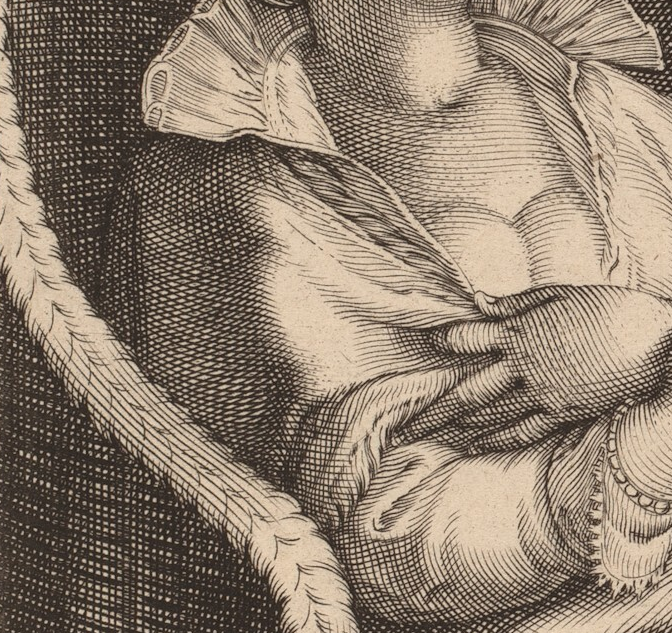Northern Mannerist Prints from the Kainen Collection
A stunning exhibit on northern Mannerist prints has opened at the National Gallery of Art, built entirely from the bequest of Jacob and Ruth Cole Kainen. This exhibit is a beautiful encapsulation of the work not only of Hendrick Goltzius, but also of his Haarlem colleague Cornelis Cornelisz. van Haarlem, his students Jan Saenredam, Jan Muller, and Jacob Matham, and the related circle of Prague Mannerists working for the Holy Roman Emperor Rudolf II, a patron who admired the Haarlemer’s achievements in engraving, drawing, and painting.
Professor Paul Barolsky once remarked that Goltzius is “an art historian’s artist.” Though not an A-lister like Michelangelo or Rembrandt, his works still remain fascinating for their virtosity of both humanistic erudition as well as technical execution – a perfect subject for a scholar interested in researching or teaching either of these aspects of art history. Nor is this such an anachronistic way to approach Goltzius artworks. Walter Melion, a scholar of Goltiuzs, has demonstrated that many of the artist’s masterworks are as much about their religious or classical subjects as they are a comment on his own artistic virtuosity.1
This exhibition is a beautiful demonstration of this argument. Ruth Cole Kainen’s bequest adds a number of key works to the National Gallery’s collection, most all of them impressions of stunning quality. Though I was delighted to see some old favorites hanging here, like Goltzius’ Pietà that conspicuously imitates the style of Albrecht Dürer, or his showpiece engraving of one of the ancient Roman heroes Titus Manlius Toquatus, I was also glad for the chance to have my first look in person at a series of the four times of day designed by Goltzius and engraved by Jan Saenredam in 1595.
.](/assets/images-display/saenredam_night.png)
Jan Saenredam after Hendrick Goltzius, _Night-, 1595-1598. National Gallery of Art, Gift of Ruth Cole Kainen.
In this show, Jan Saenredam comes across as Goltzius’ most technically-gifted pupil. More so than his fellow students, Saenredam seems to have inherited his teacher’s ability to think about engraving – an intrinsically mechanical art – in a fluid and subtle manner. The exceptional impressions in this exhibition showcase these artists’ keen understanding that the human eye perceives the boundaries between fields of light and dark more acutely than the actual fields themselves. The area behind the woman’s shoulder in this detail would, in reality, have less light on it than at the boundary where candlelight falls onto her sleeve. Yet you will notice Saenredam actually uses even denser hatching along this border than in the “dark” zone of shadow behind it, playing on this characteristic of human vision, and so deftly engineering from woven lines of black ink the convincing appearance of candlelight falling across fabric.

Jan Saenredam after Hendrick Goltzius, detail of Night, 1595.
You will find more than just technical excellence here, however. Goltzius wittily tucked figures into the background corners of each design (usually glimpsed through a window frame) representing each time of day through their accompanying labors and pleasures, all overseen by an attendant deity in the sky above. Beyond rehearsing this time-tested Renaissance conceit, however, Goltzius and Saenredam invite you into a subtly-observed day in the life of a young, well-to-do couple. Small continuities tie the four scenes to each other: the lace shoulders on the woman’s dress, so pert and composed at the morning meal, wilt ever so slightly through the day; so too does her husband’s well-coiffed hair, which shows signs of sweat as he labors over a carpentry project in the heat of mid-day, then of being combed rakishly back into place before dinner. In spite of all the attention Goltzius lavished on constructing learned and witty compositions to render in print, his keen eye for naturalistic details never faltered.
An art historian’s artist, indeed.
